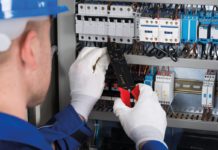
VTT Technical Research Centre of Finland has studied the energy consumption of indoor swimming pools and practice indoor ice rinks, and their use of solar power. It is possible to address 30% of the energy needs of such sites with solar, the research concludes. However, the storage of this energy still poses a big challenge for increasing its usage.
Approximately 40% of the EU’s overall energy consumption is taken up by buildings. The currently valid EU directive requires all new buildings to be nearly zero-energy (NZEB) by the end of 2020.
VTT used computer simulation to examine the ways indoor swimming pools and indoor ice rinks use their energy, and in what ways this consumption could be reduced.
Currently, electricity plays a significant role in both types of hall. Some of this energy requirement could be met by collecting solar power in spring, summer and autumn, said the researchers.
It is profitable to use solar power for the special needs of ice rinks in summer, when the energy consumption of refrigerating machines is at its highest. In swimming halls, the situation is reversed, because the premises need most heating in the winter time, when the availability of solar energy is at its lowest.
When not stored, solar power can cover 30% of the energy needs of both types of sports hall at reasonable cost. The most optimistic appraisals suggest solar power could address 35% of the energy used in indoor swimming pools and 50% of the power used in indoor ice rinks. There are several factors affecting the figures, such as location, the orientation of the building, the weather conditions, time of year, and tree stands or other buildings shadowing the building.
It should be possible to store large amounts of solar-produced power at low cost to make solar energy a flexible and year-round alternative, but this remains challenging. With indoor swimming pools and indoor ice rinks, it is difficult to achieve nearly zero-energy level with the currently available building and technical solutions without the costs rising uncontrollably. Storage of electricity is particularly challenging and expensive during winter. Furthermore, the batteries are heavy and take up a lot of space. Compared to, for example, liquid fuels, the batteries take up 10-100 times more space. The service life of batteries is currently 10 to 15 years.
The results of the research serve as a tool for planning new sports halls, when the designers want to use renewable energy. The results will be made available to designers and the construction industry.
VTT suggests its method could support the development of individual plans for sports halls, to get the right number of panels and the best orientation for each hall.








